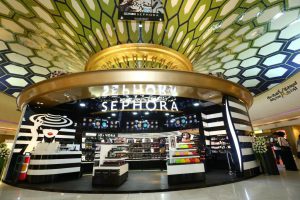In a world in continuous movement, the airplane has become a very common means of transport, almost like the subway or the bus. Airports have a life of their own and can therefore offer services and entertainment for all audiences, both professional and tourist. They are already like small cities.
In this sense, we can mention the latest growth data from several airports, including Barcelona El Prat. It is currently the second most important airport in Spain and the seventh most important in Europe, just after Madrid. This year the progression of the airport will continue with a much wider offer of destinations and places. The objective is to reach 50 million passengers per year. Its new destinations will allow it to move from one European level to a world level. Therefore, in response to this growth it has emerged the project for the new terminal T3 for 2026, along with a new concept dedicated to “walkthrough” and the travellers’ new shopping behavior.
Change of paradigm:
How do airports compete to be the traveler’s first choice?
Airports fight to attract a certain type of companies and destinations. The key factor for differentiation is undoubtedly always in all areas “the experience” of the consumer (= traveller).
We can take as a good example Singapore’s Changi airport and its services dedicated to professional and tourist travellers: cinema, catering, shopping centre, swimming pool, spa, workspaces, exhibitions, floral garden…
Which brands invest in new Travel Retail concepts?
These airports are also places of shopping experiences where national brands propose their local products in a different way than they do in the rest of their points of sale. We can take as an example Enrique Tomás in Spain and Ladurée in France using their kiosks as tasting bars as well as shops.
Airports know that they must be equipped with new types of shops; with smaller formats and with a smaller but more selective offer of their products. Certain brands such as Relay (Lagardère travel retail), Fnac, Muji or Natura brought to airports what is essential for the traveller’s experience within their sector of activity. These concepts can also be found in other hubs (metro, train station, etc.) with different concepts or brands.
Muji to go or Fnac Connect are brands specifically dedicated to travelling customers with their own codes and their own product programs.
Our way of travelling, whether for leisure or business, brings with it a new way and way of consuming. Let’s think that more and more the leisure is business. The brands’ challenge is to adapt themselves to these customers in “travel mode” with stores offering a selection of differentiated products, located at strategic points of the travel journeys of potential customers.
Even if we do not travel, to get to know new products or services of our favorite brands, from now on, instead of going to a Shopping Centre, we will go to the airport. That is because it is there, where we will be able to find the differential offer that we want.
Putting your mobile in “airplane mode” is going to stop being what it was.
Théophile Dreyfus.
Business Development & Communication manager Grup Idea

